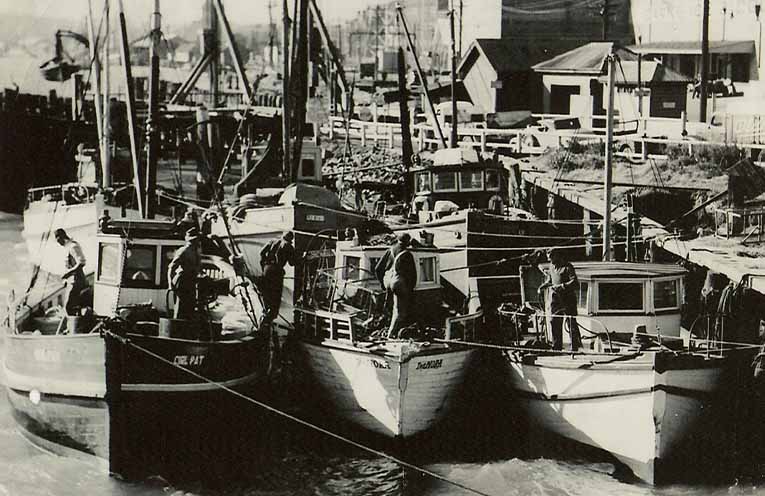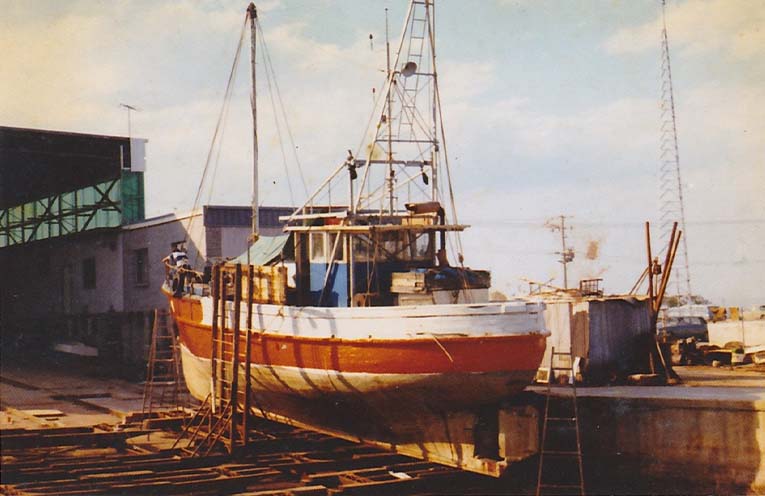
NICKNAMES are entrenched in Aussie culture and there are none better than fishermen when it comes to handing out odd names for all sorts of reasons.
A “swingle bar” is a wooden spreader used to keep trace chains apart behind draft horses.
You may well wonder how anyone, particularly a fisherman, could be nicknamed “Swingle Bar”.
Well, Olly Harris was a farmer who became, over the years, a very good fisherman.
He always referred to the spreader on his trawler, which separated the lead line from the cork line, as a swingle bar, referring back to his farming days.
This was enough for the trawlermen, Alf Mitchell and his mates, to name Olly “Swingle Bar” Harris.
In January 1938 Olly Harris moved his family from Singleton to Eagleton’s farm at Anna Bay with their cows and five kids – two sets of twins and one older sister.
Olly took over the local milk run.
The 1940s was a very busy time in Nelson Bay with boats being built on just about every corner. Jimmy Hill, Harry Lund and Archie Campbell were all building trawlers in Magnus Street.
Jimmy’s boat, the “Duncan”, was a double-ender approximately 50 ft long with a wheel house down the stern with a six cylinder 40hp Southern Cross motor to push it along.
Harry Lund was building a bigger trawler, approximately 55 ft, in the next yard called the “Aurora”.
Archie Campbell, a taxi driver from Sydney, was building the 45ft trawler “Alma” across the road while he and his wife lived in a tin shed with no floor but the earth.
Another boat being built was “Ping” Asquith’s 38 footer “Ilma Dale”, which Olly later towed to Newcastle behind the “Nora” so that the motor could be fitted.
Olly Harris’ son, Bruce Harris, takes up the story.
“In 1943 Jimmy Hill offered Dad 20 percent share of the catch if he would come and help him finish building the ‘Duncan’ – it was only going to take three months,” Bruce said.
“Dad accepted the offer and sold his cows and then the milk run to the Fenwicks.
“We moved to Nelson Bay and lived in Magnus Street overlooking Port Stephens.
“At the front of the house we had 130 steps down to the beach.
“What a great place to grow up; we spent a lot of time on the water building canoes from sheets of corrugated iron from the Army camp at Little Beach which later became a migrant camp.
“We used butter box ends for the stern of the canoe and tar from the road, when it was hot in the sun, to fill all the cracks so it didn’t leak.”
“Duncan” was launched in 1944, taking 10 months to finish.
“I can still remember the big wheels made out of logs and Dad towing it some of the way with his small Dodge truck,” Bruce said.
His father worked for Jimmy Hill for a couple of years then bought his own boat, the “Nora”, a 37 footer built by Reg Massey at Norah Heads and launched into the surf in 1946.
In 1949 Olly bought the trawler “Auderle”, a 50 footer built by Jack Mitchell at Swansea.
Every boat outlives its working life and so it was with the “Nora”.
The boat was originally pushed along by a 30hp Lister before a new 54hp Freedom Lister was installed in 1953.
“Nora” sailed to QLD in 1958 where, two years later, a 90hp, three cylinder, six piston Rootes Lister engine was used for the extra power required in the northern waters.
Tired and beyond repair, “Nora” was burned to the ground at Yeppoon on “Cracker Night”, 5 November 1984.
Bruce, who spent so much of his life working the boat, was asked if he wanted to come and light the match – he refused.
By John ‘Stinker’ CLARKE



